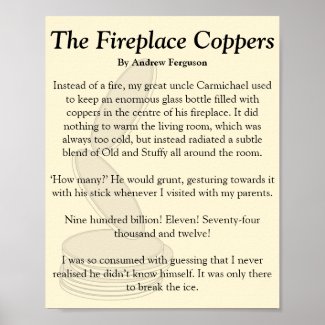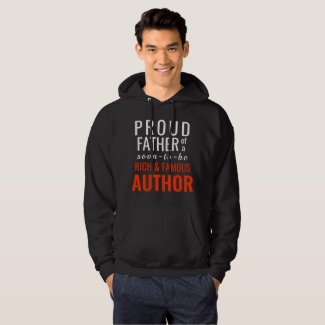Horror Clichés and How To Avoid Them

Originally published 15/12/2018
Well, we’re getting near the end of our series on genre clichés and how to avoid them. Today it’s all about horror.
Just where do I begin with this one? Horror is just one great big stinking cliché for the most part but I’ve whittled it down to three of my favourites (or least favourites?). You know the drill by now, so let’s just cut straight to the clichés:
Quasi-religious Themes
This trope makes much of the darker themes found in traditional religion (usually Christianity in most western literature) such as demonic possession, anti-christs and so on. More often than not, the story is only very loosely based on actual religious doctrine which is taken way out of its theological context, bringing it far closer to the realms of fantasy than anything else.
That’s okay. I like fantasy. I have no objection to you using your imagination. I just think that if you’re going to come up with something like that, you might as well go the whole way and an invent a cult or religion from the ground up, rather than distorting a real life religion to the point that it’s barely recognisable as such.
If you’re determined to use elements from actual religions, whether Christianity or anything else, do your research. I don’t just mean Google news stories about sex offending priests, self-anointed exorcists or people who believe themselves to be the Second Coming of Jesus Christ; that will only give you the bizarre extremes. Don’t get me wrong, these will undoubtedly be helpful if you’re wanting to write a horror, but study the orthodox theology and practices of the mainstream as well. Study the history of your chosen religion. Get yourself a copy of the Bible/Quran/etc./etc. and study what they actually say. Visit a church/mosque/synagogue/etc. Interview a few run-of-the-mill non-criminal Christians/Muslims/Jews/etc. The same rule applies in horror as in any other genre: if you’re going to write a story based on a real religion (however obscure and no matter what your own religious beliefs may be), write about it accurately.
Creepy Children
Now here’s a horror trope that I have never, ever, ever liked. I dislike it for two reasons:
- It’s been overused.
- It gives me the willies.
Okay, I suppose the second reason is probably a good reason to use it if you’re writing horror so let’s just stick with the first one: overuse. There are, in my experience, three major variations on the creepy child trope:
- Children talking with adult voices. This is usually as a result of possession or because the child is not a child but some other kind of creature in child form.
- Children manifesting bizarre abilities such as levitation or surviving seemingly fatal injuries (often caused by something equally disturbing, such as a demon deliberately causing the child to harm himself/herself).
- Children sweetly assuring the terrified adults that everything is going to be okay even while they’re knee-deep in blood.
In all instances, these tropes rely on one thing: the shock factor of seeing something as sweet, innocent and vulnerable as a child being in the thick of a dark and frightening situation. Whether we are shocked by seeing children hurt, seeing them hurting others or seeing them have some strange and inexplicable insight into the dark events that are taking place, it’s always the same thing: sweet child + unspeakable darkness = cheap shock.
Seriously just… come up with something new to shock me.
ABANDONED PLACES
Speaking of coming up with something new, please remember that horrible things can actually happen anywhere; your story does not need to be set in an abandoned house, an abandoned playground or an abandoned train station.
These tropes pop up again and again and understandably so, since they’re effective. There is something about a beaten up, abandoned place that puts on us on the edge of our seats.
Now there’s nothing wrong with these settings. They’re perfectly valid. They’re just a little unimaginative and I often find myself marvelling that the heroes would ever venture into these places. I’d like to see something different, but if, for whatever reason, your characters do find themselves in an abandoned place, try not to let your spooky atmosphere become a substitute for a good story. Remember that at the heart of every good story is a good bunch of characters, so focus on the goals and motives of your protagonists (why are they loitering around an abandoned swing park?) and especially your antagonist. Ultimately you will only be able to create a true sense of rising tension (essential for horror, and indeed any story) by creating a real and believable danger to the protagonist’s life held in tension with a legitimate and critical goal that your protagonist needs to achieve. Only then will your reader be drawn into your protagonist’s plight without shouting at the pages of your book: ‘Run away and call the police, moron!’
Follow Penstricken on Twitter, Tumblr, Pinterest and like Penstricken on Facebook.
Looking for a gift for the author or fiction lover in your life?
Check out the Penstricken Zazzle store!
Want a blog of your own? Start writing today with WordPress.com!
AUTHOR INTERVIEWS:
Unfortunately, I am unable to take on any more author interviews or solicited book reviews at this time.
You can check out our previous interviews here:
- Sharleen Nelson, author of The Time Tourists [2]
- D. Wallace Peach, author of the Shattered Sea duology [2]
- Jacob Klop, author of Crooked Souls
- H.L. Walsh, author of From Men and Angels [2]
- G.M. Nair, author of Duckett and Dyer: Dicks for Hire
- Georgia Springate, author of Beyond
- S.E. Morgan, author of From Waterloo to Water Street
- Megan Pighetti, author of Fairy-Tailed Wish [2]
- Nancet Marques, author of Chino and the Boy Scouts [VIDEO]










